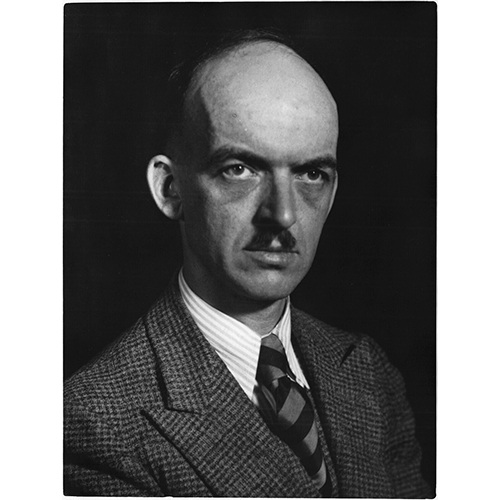Lawrence Arthur Colley Panton
L.A.C. Panton (1894-1954) - Artist Biography
Born in Egremont, Cheshire, England, the son of Charles W. Panton (an actuary) and Caroline Colley Panton. He received his education at the Lincoln Grammar School and in Sheffield at the Central Secondary School. Coming to Canada in 1911 at the age of seventeen, he settled in Toronto where he worked for a short time as an office assistant with the Grand Trunk Railway. Next he secured a job as bookkeeper with The Evening Telegram until the outbreak of World War One. He served in the 4th Division, Signal Company of the army (1916-1919) and on his discharge returned to the Telegram for two years (1920-22). He attended evening classes at the Ontario College of Art under C.M. Manly and F.S. Challener.
He married Marion Pye in 1920, and they had one son, Charles, who was killed in action in World War Two.
He took classes at the Central Technical School, Toronto, as well. Finally with sufficient training and natural ability in art he joined the firm of Rous and Mann as designer under A.H. Robson. In 1924 he became art teacher at the Central Technical School where he conducted classes until 1926. He was appointed director of art at Western Technical School (1926-1937) then became art director at Northern Vocational School (1937-51) and finally principal of the Ontario College of Art, a position he held until his death (1951-54). He took sabbatical leave to study mixed techniques including tempera painting with American artist William C. Palmer. During all this time, he was building a career as one of Canada’s important painters. His early work was a lyrical simplified realism which included landscapes, figure studies and residential city scenes. He went on to more vigorous stylization in his landscapes with emphasis on rhythmic patterns.
In his final years, he achieved greater freedom in semi-abstraction as in his scenes of mist-shrouded rocks of Nova Scotia shorelines. These last paintings were more academic in nature and could be thought of as the work of a painter’s painter. The Saturday Night of 1954 described them as follows, “In later years, Panton built his major pictures slowly, painting thin layer upon layer. By means of glazes, he achieved a rich luminosity of color. Using this technique, he turned increasingly to abstract forms in his last years. On trips to the Atlantic Coast, he was attracted by the shoreline landscape, with its combination of rock, mist and spray, of the permanent and the transient elements. In these complex paintings, there is a strong element of mysticism and a striving to express eternal truths through visual forms.” Panton worked in a variety of media including tempera, oil, gouache, and water colour. He was very active with many societies including the Ontario Society of Artists serving on its council and elected juries almost continuously from the thirties to the time of his death (Elected 1925, Pres. 1931-37); Royal Canadian Academy (former Vice-Pres., & Treas., ARCA 1934, RCA 1943); Canadian Group of Painters (1949); Canadian Society of Painters in Water Colour (Charter Member, 1925); Canadian Society of Graphic Arts (one-time secretary); Canadian Society of Painter-Etchers and Engravers (one-time memb.); worked with the Fine Arts Committee of the Canadian National Exhibition and the National Industrial Design Committee; Federation of Canadian Artists (1942, Chairman, Ont. Div., 1945). Represented in the following collections: Winnipeg Art Gallery, Man.; London Public Library and Art Museum, Ont.; Art Gallery of Ontario, Tor.; National Gallery of Canada, Ott.; Owens Museum of Mount Allison University, Sackville, N.B.; National Gallery of South Australia, Adelaide. He wrote and lectured on the History of Art, Art in Everyday Life and on technical aspects of art and taught painting, composition, design and drawing. A memorial exhibition of his work was held under the auspices of the Ontario Society of Artists at the Art Gallery of Toronto (Jan., 1955) and a retrospective show at Hart House, University of Toronto (Jan. 29 to Feb. 16, 1974). Over the years he held one-man shows at the Laing Fine Art Gallery (Feb., 1949); Board Room of McLaren Advertising, Tor. (Sept., 1949). After his death a show of his work was given by the Park Gallery, Toronto.


